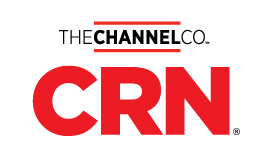
- 80 percent of internet sessions start with a search.
- Up to 33 percent of people conducting a search will click on the first organic result of a Google SERP, or Search Engine Result Page.
- Less than 10 percent of searchers advance to page 2 of results.
- Paid search drives at least 10 percent of traffic to websites, but leads from Pay Per Click (PPC) ads convert at a higher rate than organic.
- Google fields at least 1 trillion searches per year, and Bing handles millions more.
On the SERP, there are two kinds of results: organic and paid.
How websites are ranked in organic results is based on complex algorithms, but in brief, search engines like Bing or Google are constantly looking over websites to evaluate the content each site contains. They do this so when you ask for information on boots, the search engine can provide you with the best possible places to find answers.
Got it. Then what is "Search Engine Marketing"?
So, how do you use SEO & SEM to get found?

Here’s more insight on how it all works from Duane:
- Keywords. Searchers use keywords to find what they’re looking for. Most of us wouldn’t search for “Self-Contained Underwater Breathing Apparatus,” but we probably would search for “SCUBA.” But do we want gear or a diving vacation? You need to know the terms searchers are likely to type into Google or Bing, then make sure those words appear on your website. A tool like Google Keyword Planner or Bing Keyword Planner can help you determine which words to include prominently on your site.
- Title tags, meta-tags, meta-descriptions.These are keywords that are built into the coding of your webpage. While not generally visible to site visitors, these words and phrases are visible to search engines and can help you move up in organic ranking. The meta-description tag also shows up below the search result link on the SERP, so leverage it to be sure searchers understand your site will provide what they’re looking for.
- Content. Varied content that meets searchers’ needs moves your site up in the ratings, so include lots of high-value content like blogs, videos, images, infographics, etc., and make sure users can easily share that content on social channels.
- Internal links. Links to other pages within your site do two things search engines care about: ideally, they provide a smooth flow for users of your site to accomplish whatever task they’re there for. Also, they prove to search engines that you believe your own content is worthwhile.
- Mobile friendliness. With more and more browsing happening on phones and tablets, being mobile friendly is more important than ever. Be sure your site loads quickly and is developed with a responsive design to enable the best user experience possible.
For more information on how to make SEM, SEO, and PPC work for you, watch the full part 1 and part 2 of my SEO conversation with Duane Forrester, and then download Bing’s SEO: Five best practices for success overview. Also, be sure to check out the Microsoft Partner Network’s Marketing Best Practices Getting Started Guide—SEO and SEM for even more resources and best practices to get you started.

